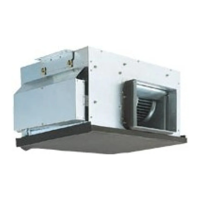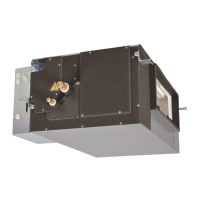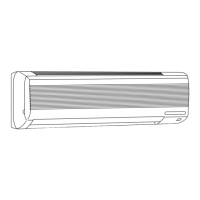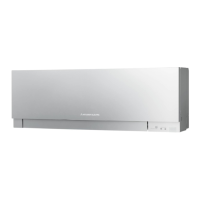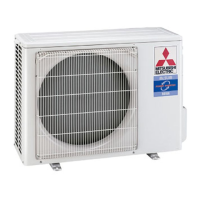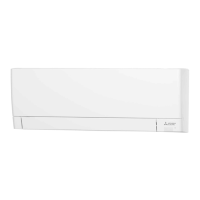
Do you have a question about the Mitsubishi Electric Elegance MSZ-AY and is the answer not in the manual?
| Brand | Mitsubishi Electric |
|---|---|
| Model | Elegance MSZ-AY |
| Category | Air Conditioner |
| Language | English |
Guide to using the split-type air conditioning system.
Explains warnings, cautions, and symbols used in the manual and on the unit.
Crucial safety instructions to prevent hazards such as fire, electric shock, and injury.
Defines symbols like 'Do not do', 'Be sure to follow', and 'Danger of electric shock'.
Details actions users must not perform, like disassembling or using incorrect refrigerants.
Covers risks associated with refrigerant leaks, internal cleaning, and appliance storage.
Emphasizes specific actions like checking for damage, avoiding water contact, and proper installation.
Safety guidelines for installing the air conditioner, including earthing and drain management.
Safety precautions for using the Wi-Fi interface, especially near medical equipment.
Instructions on how to properly dispose of the product according to EU directives.
Identifies and labels parts of the indoor air conditioning unit.
Identifies and labels parts of the outdoor air conditioning unit.
Details the functions and layout of the remote control unit.
Step-by-step guide for inserting batteries into the remote controller.
Instructions on how to set the current time and day on the remote controller.
Procedure to assign a remote controller to a specific indoor unit.
Explains DRY, HEAT, and FAN modes for various comfort settings.
Details AUTO mode for automatic adjustment and COOL mode for cooling.
Describes the meaning of the indicator lamps for different operation states.
How to adjust the vertical airflow direction using the remote.
Guide to selecting different fan speeds for optimal comfort.
How to adjust the horizontal airflow direction using the remote.
How to save and recall preferred operation settings for convenience.
Explains the ECONO COOL feature for energy-efficient cooling with enhanced comfort.
Activates features to reduce display brightness and outdoor unit noise.
Details how the air purifying device cleans the air from pollutants.
How to schedule the unit to turn on or off at specific times.
Step-by-step guide to program daily operation schedules for the week.
How to review the programmed weekly timer settings.
Manual operation via switch when remote is unavailable.
Automatic resumption of operation after power interruption.
Function to prevent mold growth and maintain unit cleanliness.
Procedures for cleaning the unit components, including safety precautions.
Details cleaning for air filters, front panel, and air purifying devices.
Emphasizes the importance of regular filter cleaning for performance and hygiene.
Guides on choosing between WPS-PUSH and Access Point modes for router connection.
Step-by-step instructions for connecting via the WPS-PUSH method.
Instructions for setting up the Wi-Fi interface using Access Point mode.
How to connect a smartphone to the Wi-Fi interface for setup.
Explains the meaning of the NET LED flashing for communication status.
Troubleshooting steps for when the Wi-Fi interface does not connect well to the router.
Common problems with the indoor unit and their possible solutions.
Common problems with the outdoor unit and their possible solutions.
Troubleshooting for remote control communication and airflow problems.
Addresses common sounds, timer problems, and Wi-Fi interface connectivity.
Lists specific symptoms like water leaks, blinking lamps, or frequent breaker trips.
Steps to take when the air conditioner will not be used for an extended period.
Guidance on selecting an appropriate and safe location for installation.
Important electrical work considerations and safety for installation.
Detailed specifications for capacity, power supply, and input for various models.
Information on guaranteed operating ranges and noise level specifications.
Technical details for the Wi-Fi interface module, including power and protocols.

